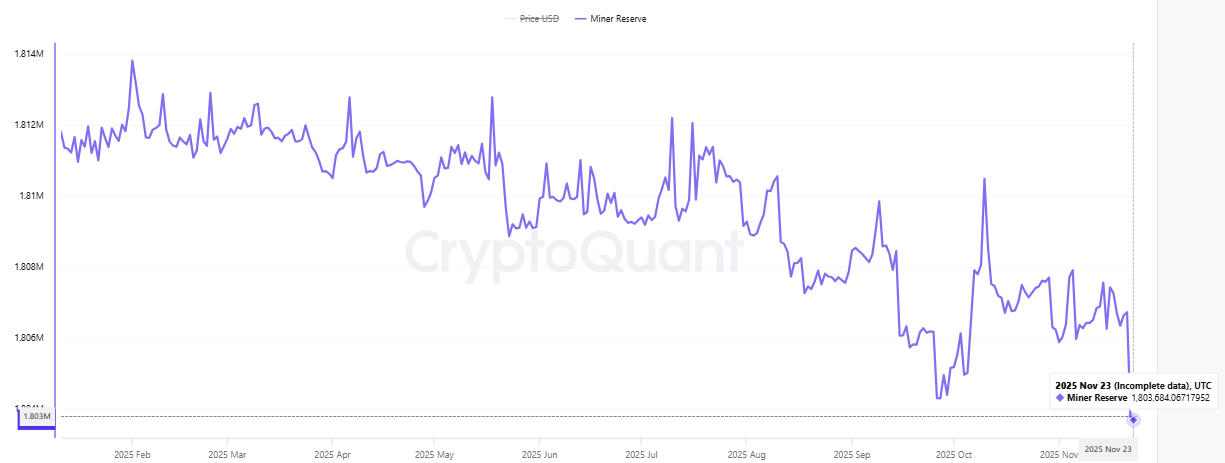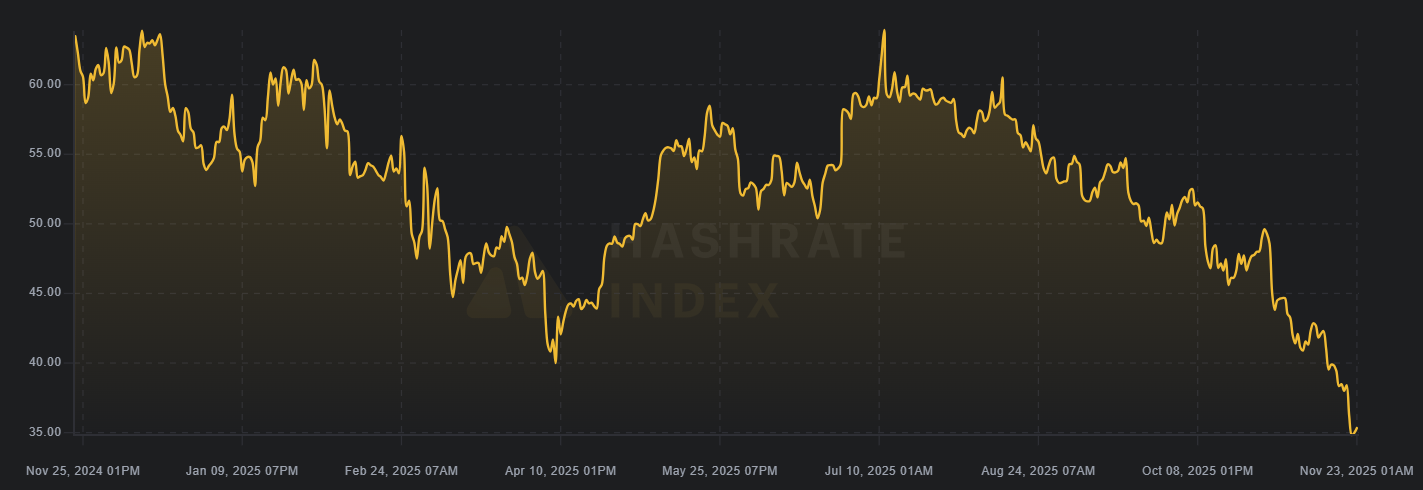Bitcoin miners are aggressively draining their reserves in a bid to shore up balance sheets against a historic collapse in revenue efficiency.
Data from CryptoQuant reveals that miners have transferred more than 30,000 Bitcoin, valued at around $2.6 billion, from their wallets since November 21.
SponsoredBitcoin Mining Faces Survival Phase as Reserves Fall to Lowest Level Ever
As a result, the exodus has pulled total miner reserves down to 1.803 million BTC, the lowest levels on record.

This sudden liquidity event signals that operators are pivoting from accumulation to survival, forced to monetize hard assets to cover operational overhead as cash flows dry up.
The catalyst for the sell-off is a brutal deterioration in mining economics.
According to Hashrate Index data, Bitcoin’s hashprice has fallen more than 50% in recent weeks to an all-time low of $34.49 per petahash per second.
Hashprice is the industry standard for tracking daily revenue per unit of computing power.
Sponsored
For context, even during the 2021 China mining ban and the depths of the 2022 bear market, this metric rarely dipped below $50.
The current levels imply that, for all but the most efficient operators, the cost of generating a new Bitcoin now exceeds the asset’s market price.
Compounding the pain is a stubborn disconnect between price and network difficulty. While Bitcoin has corrected 22% over the past month to trade near $86,075, the network’s total computing power has refused to budge.
The global hashrate remains elevated at over one zettahash, suggesting a high-stakes game is playing out across the sector.
This implies that well-capitalized public miners are keeping next-generation fleets online despite negative margins. They are effectively subsidizing production with equity issuance or cash reserves.
The strategy is designed to squeeze out smaller, private competitors who lack access to capital markets.
Considering this, industry analysts warn that if Bitcoin prices do not quickly reclaim their uptrend, the sector could face a prolonged wave of capitulation.
In that scenario, distressed miners may be forced to liquidate not only their Bitcoin holdings but their physical infrastructure as well.

